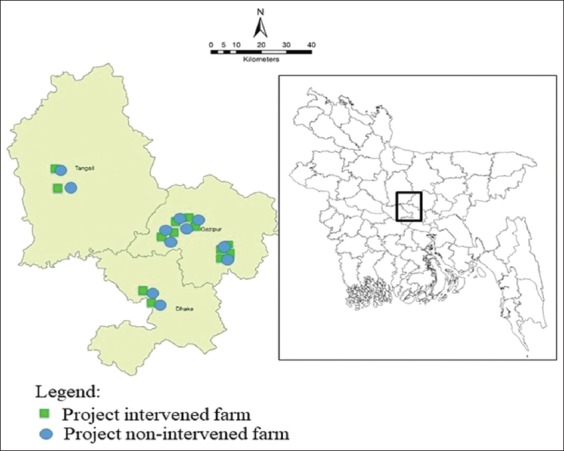Background and AimSalmonella spp. are an necessary group of pathogens liable for human and animal illnesses. This research aimed to estimate the prevalence and determine and characterize of Salmonella spp. remoted from broiler farms of Gazipur, Tangail, and Dhaka districts of Bangladesh.
This research additionally evaluated the distinction of Salmonella positivity standing between two teams of farms, good practices tailored in broiler rearing on the challenge intervened farms, and non-project intervened conventional farms.Materials and MethodsA complete of 352 samples together with 128 cloacal swabs, 32 complete carcasses, 64 feed, 64 water, and 64 attendants’ hand rinses have been collected by handy sampling approach from 16 poultry meals security challenge of Food and Agricultural Organization of United Nations Bangladesh intervened farms and different 16 non-project intervened farms in the identical location.
Various cultural based mostly strategies and biochemical strategies have been employed for the estimation of prevalence, isolation, and identification of Salmonella spp.
which was additional evaluated by polymerase chain response. Antimicrobial susceptibility check utilizing disk diffusion strategies and serogrouping by slide agglutination check was completed for added characterization.
ResultsAmong the samples, an general prevalence of Salmonella spp. was 31.25% (110/352) (95% confidence interval [CI]=26.44-36.38%). However, the prevalence of Salmonella spp. was 24.43% (43/176) (95% CI=18.28-31.47) in challenge intervened farms and 38.07% (67/176) (95% CI=30.87-45.68%) in non-intervened farms. Among the 110 isolates, 31.82% (35/110) have been fitted below serogroup B, and the remainder of the isolates 75 (68.18%) below serogroup D. Of 110 isolates, 82.72%, 77.27%, 81.82%, and 79.09% have been prone to ciprofloxacin, gentamycin, norfloxacin, and streptomycin, respectively. In addition, 81.82% and 80% isolates have been proof against erythromycin and tetracycline, respectively. Isolated Salmonella spp.
introduced average resistance to each amoxicillin and azithromycin. Alarmingly, 80.91% (89/110) isolates have been proven to be multidrug-resistant Salmonella spp.ConclusionThe research has introduced a big variation of the prevalence of Salmonella spp. between challenge intervened and non-project intervened farms, and this means challenge intervened farms are comparatively safer than the non-intervened farms contemplating public well being and meals security grounds.

This analysis end result additionally has highlighted a considerable proportion of poultry origin multidrug resistance Salmonella spp.
is a possible supply of public well being hazards. In this regard, correct consciousness creation and motivational actions on good agriculture practices in poultry rearing and sustaining good private hygiene on the farmers’ degree are warranted by participatory coaching.
